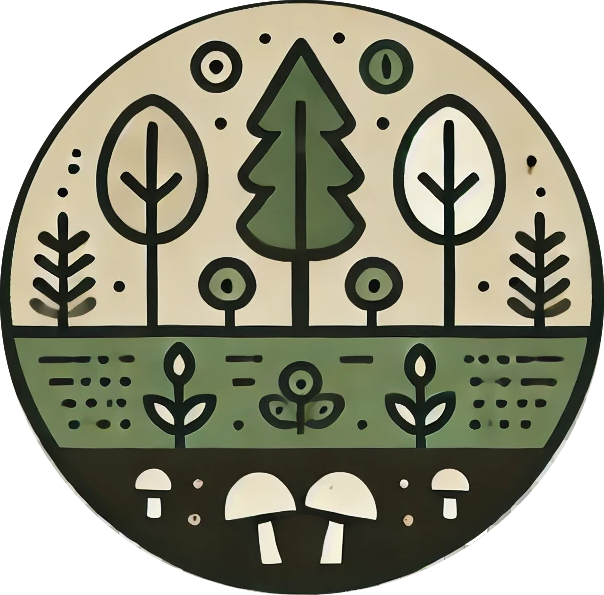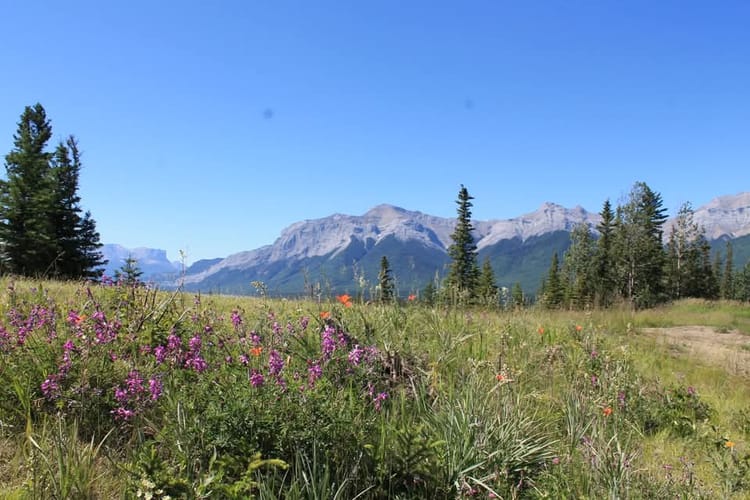The Giant of the Eastern Forest

Imagine walking through an Appalachian forest around the year 1900. Towering above the canopy stood the American chestnut (Castanea dentata), one of the most dominant and beloved trees in the eastern United States. Reaching heights over 100 feet and spreading 10 feet wide, it was often called the "king of the forest." In some places, 1 out of every 4 hardwoods was an American chestnut.
The chestnut’s range stretched from Maine to Georgia. Each fall, these giants rained down sweet, nutritious nuts that fed bears, deer, turkeys, and entire rural communities. Families collected them by the wagonload to roast, sell, or feed livestock. The trees flowered late, reliably producing even after spring frosts, making them a key food source year after year.
Beyond their bounty, chestnut trees were prized for their wood: lightweight, strong, rot-resistant. They were used for everything from log cabins and barns to railroad ties and telegraph poles. Even the bark served an economic role, supplying tannins for leather production. For many, the chestnut was a “cradle-to-grave” tree—essential throughout life.
An Invader Arrives
Then, in 1904, disaster struck. At the Bronx Zoo, Hermann W. Merkel discovered trees with wilting leaves and strange oozing cankers. Samples were sent to mycologists, and by 1906, the fungus Cryphonectria parasitica (initially misclassified) was identified as the culprit: the now-infamous chestnut blight.
The fungus spread rapidly, infecting trees from New York to Virginia within a decade. Carried by wind, birds, insects, and even on people’s boots and tools, the blight killed by girdling branches and trunks—choking off water and nutrients. Although the roots often survived and sent up new sprouts, these too would succumb once they reached adolescence.
How It Got Here
The fungus likely hitchhiked to America on Japanese chestnut trees imported in the late 1800s. While Asian chestnuts had co-evolved resistance, American trees had no defense. Plant catalogs in the U.S. offered Asian varieties, unknowingly spreading the disease across the country.
By the 1920s, the chestnut blight had devastated the tree’s entire native range. Over 3 billion trees were lost. The ecological and economic collapse was so profound that Congress passed the Plant Quarantine Act in 1912, though it came too late to save the chestnut.
Early Scientific Response
Scientists tried to contain the blight. Crews cut and burned infected trees. Chemical treatments were applied. But the fungus was unstoppable. Researchers like Paul J. Anderson and George P. Clinton tracked its spread and studied its biology, but eradication proved impossible.
Instead, attention turned to long-term survival: breeding a blight-resistant chestnut. Arthur H. Graves, a Yale plant pathologist, was among the first to propose crossbreeding American and Asian chestnuts. By 1930, he began controlled hybridization with help from geneticist Donald F. Jones. Their work continued for decades at orchards in Connecticut, including the famed Chestnut Plantation at Sleeping Giant.
A Legacy of Persistence
Early hybrids showed partial resistance but often failed. It would take generations of breeding and selection to make progress. Still, these efforts laid the foundation for modern chestnut restoration.
Even as mature chestnuts vanished, their roots survived. Across Appalachia, chestnut stumps continue to send up shoots—hopeful signs of a species refusing to disappear. Forests of standing dead chestnut trunks were logged for their still-useful wood, known today as “wormy chestnut.”
The Restoration Movement
The American Chestnut Foundation (TACF), formed in 1983, carried on the legacy of Graves and others. Using backcross breeding, hypovirulence (a technique that weakens the blight fungus with a virus), and biotechnology, TACF and partners are planting blight-resistant chestnut saplings and testing them in the wild.
Though restoration is slow and complex, hope is real. For the first time in over a century, we may be within reach of returning the American chestnut to its rightful place in the forest canopy.
References
- Anagnostakis, S. L. (1997). Chestnuts and the Introduction of Chestnut Blight. CAES Fact Sheet PP008.
- Anagnostakis, S. L. (2010). History of Chestnut Research at The Connecticut Agricultural Experiment Station. Frontiers of Plant Science, 58(1).
- Anagnostakis, S. L. (2012). Chestnut Breeding in the U.S. for Disease and Insect Resistance. Plant Disease, 96(10), 1392–1403.
- Smith, S. S., & Coulter, T. (2017). From the Woods: American Chestnut. Penn State Extension.
- The American Chestnut Foundation. Why American Chestnuts? Retrieved from TACF.org.
- Invasive Species Centre (Canada). Chestnut Blight. Retrieved from invasivespeciescentre.ca.
Interested in helping bring back the chestnut? Learn more at The American Chestnut Foundation.




